|
Landing Craft Tank 979 - LCT 979.
Operation Infatuate, Walcheren
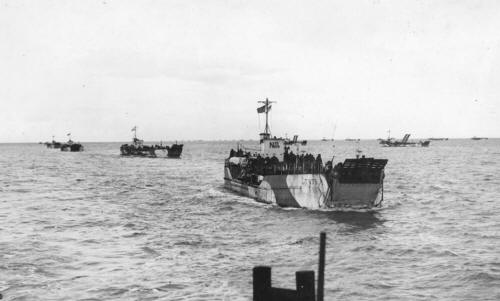
Background
Operation Infatuate was an amphibious landing, which, in the
opinion of many, was
much
more
hazardous
than most witnessed on D-Day.
Click
here
for a description of the wider operation.
[Photo; LCT 979 making her way to Walcheren].
Landing Craft Tank 979 (LCT 979) took part in
Operation Neptune, the Amphibious phase of Operation Overlord, in the summer of
1944 and was called upon again to take part in Operation Infatuate, this time to
transport personnel carriers and men
to a landing beach on the heavily defended island of Walcheren in Holland. The
account below was written by its Commanding Officer, Lt Phillips WD Winkley, RNVR.
Three months after D-day, activity involving
landing craft had subsided after a period of frenetic activity. My Mark IV
Landing Craft Tank, LCT (4) 979, along
with another, coincidentally commissioned with us some eighteen months earlier at Alloa on the River Forth in Scotland, received orders to proceed from
Fort Gilkicker near Gosport to Southampton. A new flotilla was forming to
undertake further assaults as and when required.
The mess deck was abuzz with speculation on likely destinations, although the
prospect of home leave was of more compelling interest to us at the time! Our
forward base was to be Ostend in Belgium, by then in Allied control.
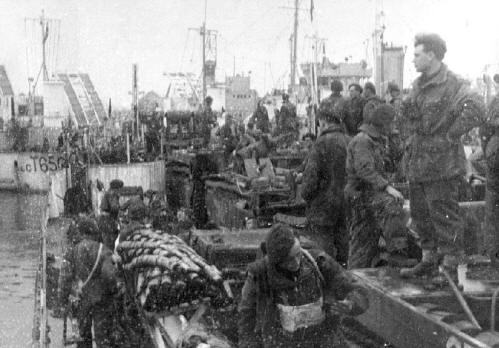 Briefing and
Preparations Briefing and
Preparations
The object of our attentions was the small but heavily fortified
island of Walcheren at the mouth of the River Scheldt. The port of Antwerp, about 35 miles inland from the island,
was in Allied hands and was desperately needed to supply the advancing Allied armies on their way to Germany and Berlin.
However, the island garrison of 10,000 men occupying strong, fortified,
heavy-gun positions was proving difficult to overcome using land forces alone.
[Photo; Making ready in
Ostend].
The German heavy guns could easily obliterate
any supply ships attempting to break the blockade and a seaborne assault must have
seemed suicidal to the Germans in the safety of their concrete bunkers. Allied planners thought it was a risk worth taking for the
immense benefits to be
gained.
We would sail under the protection of a Support Squadron
commanded by our D-day Squadron Commander, Commander (Monkey) Sellars DSO
DSC RN. At the briefing, we were given all the usual guff, but when Admiral
Ramsey asked all those who had been in action before to hold up their hands, we
began to wonder, as this was a rather unusual procedure. We were told about:
1)
five immensely strong concrete gun emplacements with 8.7 in (220mm), 5.9 in (150
mm) and 4.1 in (105 mm) guns and numerous other weapons, including the ubiquitous
88mm cannon; 2) a gap in the dyke, which had been made by RAF bombers some
months previously and on which spot we were going to make the actual landing;
3) a radar
station to the starboard of this and 4) hazardous German defences, such as
beach obstacles with mines attached. With the RAF in support to bomb the enemy positions to blazes
just before we landed, it would be a piece of cake! We weren’t to worry, since the
main armaments would be out of action before we moved in and we began
to feel better; but how often in war did operations of this kind go adrift.
We embarked our buffaloes (swimming infantry carriers) and
their Marine Commandos under the charge of Commander Prior, RN, a headmaster of
renown who, although well over age for this sort of thing, had a reputation for
going after Germans.
 En Route En Route
We slipped out of Ostend harbour at 0100 on
the 1st November, 1944, in inky blackness. I felt almost glad to leave, as
I had always felt it to be strangely hostile to us. The place must have
been awash with spies, who, in spite of our security measures, were pretty sure of our objective.
[Map courtesy of Google Map Data 2017].
After clearing the harbour
entrance, we settled down to cruising stations and shortly after 0400 a signal informed us that the RAF would
not be able to fly in support of our operation because of low cloud. The fire
power of HMS Roberts and HMS Warspite
did not compensate for this loss but, we pressed on regardless, since dawn and tide wait for
no man.
As we approached the coast, dawn was breaking. We were still
ten miles or so from the dyke in full light, which made us a very visible target
for the enemy's big guns. Our situation was not very good for our health! Roberts
opened the first round at 0800, which I entered in the log. Commander Prior
appeared on the bridge and strapped on rubber waders. He thought it was a rather dicey operation without air support and I agreed with him.
We hoisted a brand new battle ensign, which, although now
rather shot up, is a treasured family war relic. Returning fire from the enemy's
big guns was beginning to fall around us. Five twinkling flashes in the far
distance would create great plumes of water some seconds later as the shells exploded
in the sea. More water spouts straddled our flotilla as the enemy guns homed in
on our range and position. I remembered the adage “alter (course) to the fall of
shot” but then realised, that at six miles distant, such evasive action was
ineffective except, perhaps, to give comfort to those on board from taking
avoiding action. Despite our perilous position, Commander Prior asked me what he
owed the mess fund for the few hours he had been with us. I was rather amused and of
course replied that we would be pleased to write it off in the circumstances!
However, after the battle I found an offering on the Ward Room table. Such was
the RN.
The Action
At this point, we thought we'd be lucky even to reach the beach
let alone make a landing but then, as if to urge us on, a squadron of six
Landing Craft Rocket, LCT (R)s appeared. They were not the heavy stuff
hoped for from the RAF bombers but very welcome nonetheless. They immediately went in and effectively dealt with
the radar station, which we hoped would upset the accuracy of the enemy's
gunfire. The Support Squadron were now really doing their stuff “closing the
enemy”, sometimes using only pompoms. Although they did little damage, they drew
the enemy fire from our landing craft as we carried the assault troops to the
landing beaches.
Sadly, a salvo from one of our own LCT (R)s
fell short among our own craft, causing death and destruction. Some of them fell
along our port side, fortunately without causing us any damage. Everything
became more intense as we approached the landing beach at about one mile
distance. Over to starboard, another of our of our rocket firing craft sustained
a direct hit, came to a dead stop and blew up in an instant, obliterated in a pall of
black smoke. Little details held my attention as the mast top, cross trees and
jack stay soared skyward, spinning above the smoke.
I was fascinated by the
spectacle of it and had some difficulty concentrating on commanding my craft. Then to port,
an LCG (M) (Landing Craft Gun
Medium) on the way out from the beach was being chased by shells, which just
kept stopping short of her stern. Unfortunately she had been sorely damaged previously and sank a little further out. The other LCG(M)
assigned to this operation just vanished without trace.
We were now near enough to see the small beach made by the
action of the sea washing in and out of the gap in the dyke. There appeared to
be the remains of some breakwaters, which reduced the landing area somewhat.
However, by going in very close t o the flotilla officer’s craft, our sterns
actually touching, we made a successful beaching and disembarked our buffalos
and assault
troops without a casualty. o the flotilla officer’s craft, our sterns
actually touching, we made a successful beaching and disembarked our buffalos
and assault
troops without a casualty.
[Photo;
Swimming troop carriers, known as Buffalos, can be seen on the beach. Shelling
was still heavy. In the background smoke from Westkapelle can be seen rising as
assault troops attacked German defensive positions].
Enemy fire intensified, the most troublesome being large
mortars, which induced fear and were likely to cause serious damage to craft and
men. An 88 mm shell went clean through the centre of the mast, without bringing
it down fortunately. We collected five German prisoners who, for some reason,
did not much care for our hospitality!
 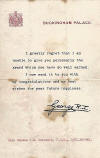  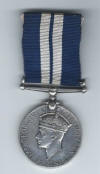 We
now prepared to un-beach but nothing I could do had any effect. I tried ahead
on one engine, astern on the other and emergency full astern but we were stuck
fast. We were in a very vulnerable position and if we didn’t move off pretty
smartly, we could be blown out of the water. The enemy gunners would eventually
hit something vital, as we were being repeatedly straddled. In those moments of
high tension, minutes seemed like hours, when
salvation came in the form of a bright and courageous Able Seaman, Stanley
George Whereatt, D/JX.369940. We
now prepared to un-beach but nothing I could do had any effect. I tried ahead
on one engine, astern on the other and emergency full astern but we were stuck
fast. We were in a very vulnerable position and if we didn’t move off pretty
smartly, we could be blown out of the water. The enemy gunners would eventually
hit something vital, as we were being repeatedly straddled. In those moments of
high tension, minutes seemed like hours, when
salvation came in the form of a bright and courageous Able Seaman, Stanley
George Whereatt, D/JX.369940.
[Photos
L-R; AB Whereatt, Citation, King's letter and medal].
As both door lifting wires had been shot off,
the door could not be raised, causing the ramps
fitted on the front of the craft to become hopelessly snagged on a beach obstacle.
Amazingly, AB Whereatt re-reeved
one wire, shackled it to a spare eye bolt and raised the door sufficiently to
get clear. For this effort, carried out under intense fire, he subsequently
received the Distinguished Service Medal (DSM).
While all this was going on, No 1 was endeavouring to put out
a fire on the quarter deck. It turned out to be a pile of smoke canisters left
by our Marines. The canisters had ignited, making us a very obvious target
without providing us with any useful cover behind the smoke. As soon as we
un-beached, the enemy's 88 mm gunners targeted us again. It seemed impossible
that our luck could continue and, on cue, we sustained a
direct hit in our engine room. A pungent
smell pervaded the craft and we expected the engines to
die away but our luck held and we continued on our way out of range of the guns. The entry hole the
shell created was easily
repaired with the use of a hammock. Despite what we'd been through, the only
casualty sustained was one seaman suffering from shell shock.
The Aftermath
After making our report to the Head Quarters
ship, we saw our sister craft, commanded by Lt Phillipson, towing a crippled LCG (Landing Craft Gun), which had received a
frightful pounding. She had taken it in tow, while under heavy fire. As we were about
to hail each other, both LCT and LCG rose up on a monstrous mound of white
foaming water, which left our sister ship with its back broken and sinking. We
made ready to go alongside when another mine exploded under her, causing more
damage, but fortunately no casualties. We held off when we saw an LCG was
already alongside taking off the crews. Having seen them safely away, we
proceeded to Ostend without further incident. We berthed at the end of an action
packed twenty-four hours. I wondered if the ghostly heroes of
Zeebrugge, which
was so close at hand, approved of our efforts. I'd like to think that they did.
Lt Winkley's daughter writes, "Lt Phillipson was a fellow
officer and friend of my father. In the confusion of war, his wife informed my
mother that my father's ship had probably been lost, causing, I imagine, some
alarm and anxiety. All became clear when my mother received a letter from my
father, dated
Tuesday 7th November, that included the following extracts;
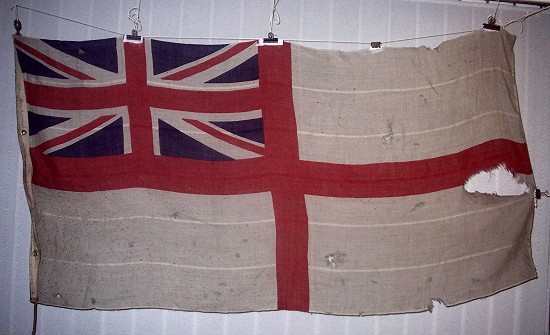 "Just a note to say I am safe. As you probably heard on the Radio, things were
pretty bloody, much worse than "D" day. I really did not expect to see you and
Joy again, however, I will, and soon I hope. We are just waiting for the weather
to be more favourable. "Just a note to say I am safe. As you probably heard on the Radio, things were
pretty bloody, much worse than "D" day. I really did not expect to see you and
Joy again, however, I will, and soon I hope. We are just waiting for the weather
to be more favourable.
[Photo; The "brand new" white ensign after
the battle, with many more bullet holes than are visible in this image].
Phillips is aboard me, as he unfortunately lost his ship but he is safe and
sound, which is all that really matters.
I think I got some good photos this time, although at the time I did not think
they would ever be seen - however all's well that ends well."
Further Reading
On this
website there are around 50 accounts of
landing craft training and
operations and landing craft
training establishments.
1)
http://combinedops.com/Walcheren.htm for an account of the wider
landing. 2)
German coastal defences on
this Walcheren website with a printable list of English translations
of selected words. Many interesting photographs.
3) http://www.lawlerbrown.com/ (Copy & Paste this
link for memories of a soldier who saw service on Walcheren.
There are around 300 books listed on our 'Combined Operations Books'
page which can be purchased on-line from the Advanced Book Exchange
(ABE) whose search banner checks the shelves of thousands of book
shops world-wide. Type in or copy and paste the title of your choice
or use the 'keyword' box for book suggestions. There's no obligation
to buy, no registration and no passwords. Click
'Books' for more
information.
Turning the Key; the Capture and Liberation of Walcheren Island October 30 -
November 8, 1944 by Paul M Crucq. 320 pages, maps, photos, bibliog. ISBN/EAN
978-90-807854-4-1.
Hoofprints
in the Clouds - Jeep Tracks in the Mud by
Geoffrey Tudor.
An account
of how a group of men came together in Scotland in the late summer of
1943 to form a new mountain battery. Geoffrey Tudor relays his
World War II experiences as 'Graham Turner', a second lieutenant with
the 1st Mountain Regiment, Royal Artillery. With the formation of 474
Mountain Battery and their initial training in the Scottish mountains,
the gunners then cross the Channel to the floods of Holland and
through bloody conflicts in northern Germany. Pen Press Publishers, 15
Nov 2008. Paperback 272 Pages. ISBN: 1906206325. £8.99.
Mountain and Flood - The History of
the 52nd (Lowland) Division by George Blake, published by Jackson,
Son and Company, Glasgow 1950.
They did what was asked of them,
by Raymond Mitchell. Pub by Firebird Books, 1996. ISBN 1 85314 205 O
History of 41 [Royal Marine] Commando - the book covers the period
1942-1946, but has a detailed chapter on 41's role in the invasion of
Walcheren.
In the Shadow of Arnhem by Ken
Tout. xiv, 242 pages and 42 illustrations. Published by Sutton
Publishing Ltd., Phoenix Mill, Thrupp, Stroud, Gloucester GL5 2BU
England. ISBN 0-7509-2821-2
Ken's book is
published in English. The subtitle is: The battle for the Lower
Maas, September-November 1944. Chapters 7 and 8 are about province
Zeeland and most about Walcheren and South Beveland. Chapter 7
begins at page 116 to page 133 and chapter 8 starts at page 134 and
ends at page 155. Jan H Wigard, Walcheran, Holland.
Battle
for Antwerp; the liberation of the city and the opening of the Scheldt
by J L Moulton. 1944 (London, Ian Allan, 1978) ISBN 0-7110-0769-1.
Tug of War - by W Denis Whitaker DSO. Pub 1984. ISBN
0-8253-0257-9. This Canadian author saw service at Dieppe and
Walcheren. The book contains good detailed information on the
Walcheren Causeway fight.
Battalion of Heroes:
the Calgary Highlanders in World War II
by David Bercusson. Pub by The Calgary Highlanders Regimental Funds
Foundation 1994. ISBN 0-9694616-1-5.
Cinderella Operation by General Rawling. Pub by Cassell Ltd
The Eighty Five Days - The Story of the Battle of the Scheldt
by R W Thompson. Pub by Hutchinson of London.
From Omaha to the Scheldt - the story of 47 Royal Marine Commando
by John Forfar. Pub by Tuchwell Press Dec 2001. ISBN 1 86232 149 3.
300 pages with around 150 B&W illustrations and maps. John Forfar was
the Senior Medical Officer attached to 47 RM Commando. For his heroism
at Walcheren he was awarded the Military Cross.
Operation Neptune by Commander
Kenneth Edwards R.N. Published by Collins in 1946.The book covers the
naval side of the North West Europe campaign including Commando
actions such as Walcheren.
Le Jour J au Commando N° 4 by René Goujon (French
Kieffer Commando), published by Editions Nel 1, rue Palatine, 75006
Paris tel 00 33 1 43 54 77 42. Enquiries in English to the author's daughter
at armoria.d.ylfan@hotmail.fr
Drijvende kolossen voor vrede en veiligheid;
het gbruik van Phoenix-caissons bij dijkherstel in Zeeland, 1945-1953" by
Cor Heijkoop 2002 publisher: Stichting Caissons Ouwerkerk/Museum Watersnood
1953. (Translation - Floating Colossuses for peace and freedom, the use of
Phoenix caissons in dyke repairs in Zeeland 1945-1953) 104p. A book on the use
of the Phoenix-caissons (first used for the Mulberry Harbour) in the province of
Zeeland.
The Fighting Fourth - No 4 Commando at War
1940-1945 by James Dunning. Sutton Publishing Ltd, 2003. ISBN 0750930950
(Chapter 10).
48 Royal Marine Commando, The story 1944-46. Published privately in
1946.
D-Day Commando, From Normandy to the Maas with 48 Royal Marine Commando.
Written by Ken Ford and published(2003) by: Sutton Publishing Limited. ISBN
)-7509-3023-3.
Commandos and Rangers of World War 2
by James D. Ladd. Pub in 1978 by MacDonald & Jane's. ISBN 0 356 08432 9.
Commandos 1940 - 1946 by Charles Messenger. Pub by William Kimber, London
1985. ISBN 0 7183 0553 1.
The Watery Maze by Bernard Fergusson pub 1961 by Collins.
Codename 'NELLY'; British Radar Units on
Walcheren and in Flanders. Defence of the Scheldt estuary, December 1944 - May
1945 by
Paul M.
Crucq
Illustrations and photographs, detailed interviews; limited edition, 80 pages
and over 100 illustrations. Subjects
are: RAF mobile Radar defence at De Haan, Blankenberge [both in Belgium],
"Nelly" at Westkapelle and "Paddy" at Oostkapelle {both in Walcheren}.
Publication date Oct 2004 Price: 28 Euro.
The author writes;
On the 1st of November 1944 at Westkapelle a technical officer of the RAF
landed. His mission was to find out if the (Westkapelle) lighthouse was suitable
for the installation of "NELLY" the codename of a portable, experimental plane
radar especially developed for this aim. At the beginning of December "Nelly"
came to Westkapelle and was raised at the lighthouse till June 1945. The project
was shrouded in the greatest secrecy and that is the reason why "Nelly" has
never been mentioned before in Walcheren history.
Battle Ground Europe Guide to
Walcheren by Andrew Rawson. Published by Pen and Sword, 47 Church
Street, Barnsley. Fully illustrated with maps and photographs the book
charts the planning and execution of Operations Infatuate I and II.
The final section deals with visiting the island. 144 pages, 120
illustrations (75 wartime photos, 25 modern and twenty maps). ISBN
number is 0850529611. Available through Amazon, the Pen and Sword
website or direct from the publishers. The author is happy to answer
questions about the book and can be contacted at
rawsonandrew@hotmail.com
The three books immediately below are written in
the English and can be ordered from the author
Mr. Paul Crucq,
President Rooseveltlaan 186,
4382 KX Vlissingen,
Netherlands.
Phone +31 118-414402
Aiming Point Walcheren; the bombardment of gun
emplacements and strong points
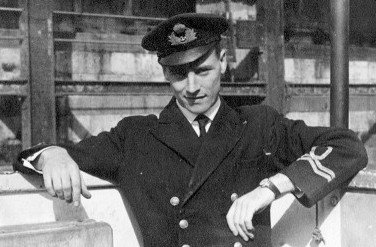 Walcheren island, October 1944 by
Paul M.
Crucq, published Walcheren island, October 1944 by
Paul M.
Crucq, published
Vlissingen, 2003. 207 pages; illustrations;
abbreviations, bibliography; bomb expenditure.
ISBN 90-807854-1-5
We never blamed the crews; the flooding of
Walcheren island, October 1944, published
Vlissingen, 2000. 209 pages,
illustrations; battle orders, bomb expenditure, bibliography.
* Illustration: situations, maps, aerial
picture, persons.
[Photo; the author, Commanding Officer of LCT 979, Lt Phillips W D Winkley, RNVR].
Acknowledgements
This account is closely based upon a hand written account of
the Walcheren action by the Commanding Officer of LCT 979, Lt Phillips WD Winkley, RNVR.
Virtually all the photos were taken by Lt Winkley on his Leica camera. Thanks are due to his daughter, Joy Timbrell,
who made all the material available for the
benefit of all and to her
 cousin,
Peter Henderson, who made the initial contact with the website. cousin,
Peter Henderson, who made the initial contact with the website.
|








 "Just a note to say I am safe. As you probably heard on the Radio, things were
pretty bloody, much worse than "D" day. I really did not expect to see you and
Joy again, however, I will, and soon I hope. We are just waiting for the weather
to be more favourable.
"Just a note to say I am safe. As you probably heard on the Radio, things were
pretty bloody, much worse than "D" day. I really did not expect to see you and
Joy again, however, I will, and soon I hope. We are just waiting for the weather
to be more favourable.

